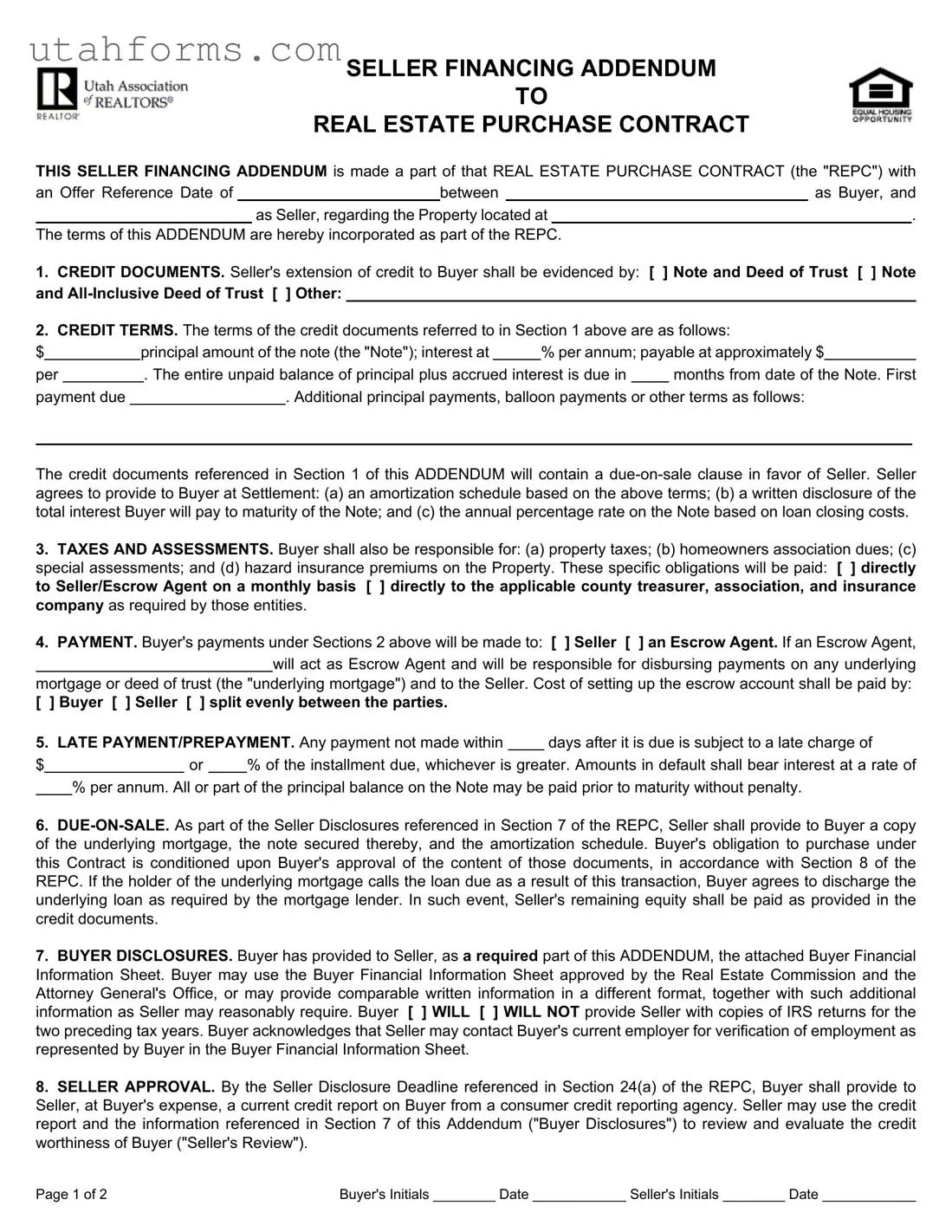The Real Estate Purchase Contract (REPC) closely resembles the Utah Seller Financing Addendum form in its core function of facilitating the sale of real estate. However, while the Seller Financing Addendum focuses specifically on the terms under which the seller will finance the purchase for the buyer, the REPC covers a broader range of details regarding the property transaction. These include, but are not limited to, identification of the parties, description of the property, purchase price, and the settlement date. The Addendum serves as an integral component of the REPC when seller financing is involved, specifying the credit terms and obligations directly tied to the purchase agreement.
The Promissory Note is another document with significant parallels to the Utah Seller Financing Addendum. It evidence the borrower's (in this context, the buyer's) promise to repay a loan to the lender (the seller). Both documents detail the amount of the loan, interest rate, repayment schedule, and the consequences of late payments. However, the Promissory Note is a standalone financial document, whereas the Seller Financing Addendum incorporates these financial terms into the broader context of a real estate transaction.
A Deed of Trust or Mortgage often accompanies seller-financed real estate transactions, serving a complementary role to the Seller Financing Addendum by securing the loan with the property itself. This ensures that if the buyer defaults on the loan, the seller has the legal right to foreclose on the property to recoup the owed amount. The key difference lies in the scope: the Deed of Trust or Mortgage focuses solely on the security interest in the property, whereas the Addendum outlines the full array of financing terms agreed upon by the buyer and seller.
Amortization Schedules are closely linked to the information found in the Seller Financing Addendum, providing a detailed breakdown of each payment over the life of the loan and how it applies to both the principal and interest. While the Addendum mentions that an amortization schedule will be provided, the schedule itself is a separate document that visually represents the repayment plan, showcasing the gradual reduction of the loan balance over time.
The Disclosure of Loan Closing Costs, often a requirement in real estate transactions involving financing, shares similarities with the Seller Financing Addendum through its role in ensuring transparency about the financial aspects of the transaction. It details the closing costs associated with securing a loan, including but not limited to, lending fees, title insurance, and processing fees. The Addendum, while not a detailed list of such costs, stipulates that the annual percentage rate on the Note is based on these loan closing costs, making the two documents complementary in understanding the financial implications of the transaction.
The Buyer Financial Information Sheet, referred to within the Seller Financing Addendum, serves as a critical document providing the seller with insight into the buyer's financial health and creditworthiness. This can include details such as income, debt, and assets, which helps the seller make an informed decision about extending credit. While the Seller Financing Addendum outlines the terms under which financing is offered, the Buyer Financial Information Sheet provides the financial context for those terms, making both documents crucial to the seller-financed sales process.
Finally, the Escrow Agreement for a seller-financed purchase shares similarities with the Utah Seller Financing Addendum in its execution of financial and contractual obligations. This agreement involves a third party that holds and regulates the payment of the funds required for the transaction based on the agreed terms between the buyer and seller. While the Seller Financing Addendum specifies terms regarding payments to, and possibly through, an Escrow Agent, the Escrow Agreement itself governs the escrow arrangement in detail, ensuring that all financial transactions between the buyer and seller occur in a timely and transparent manner.


